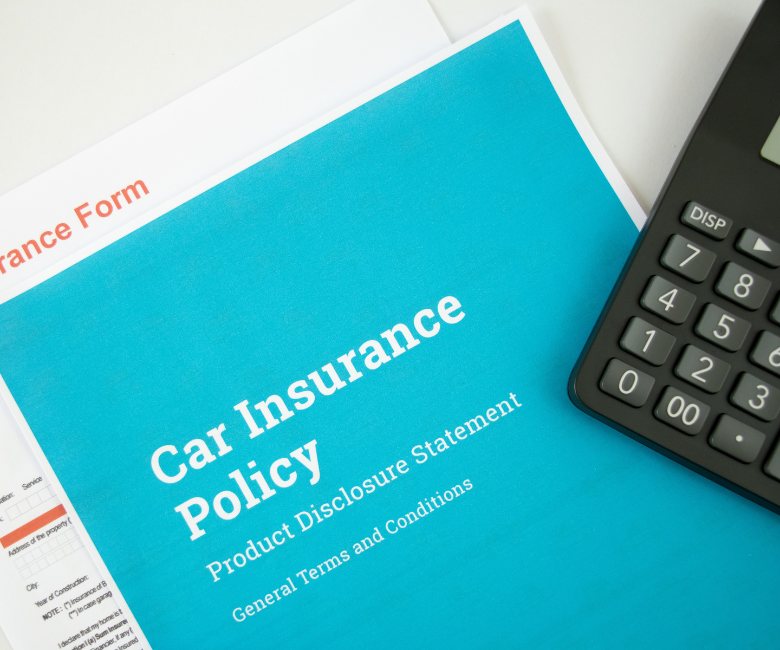
How Much Will Car Insurance Really Cost You?
- Vehicle Maintenance
- PEAK
- March 19, 2024
Everything costs more these days, car insurance too. How much will car insurance really cost you? Let's look at the average costs and factors that make up the cost.
After declining in 2020 when the pandemic struck, average car insurance costs in the United States have started rising again. According to Bankrate, U.S. drivers paid an average of $243 more for car insurance in 2023 than they did the previous year.
That's not all: In 2023, insurance accounted for a greater percentage of the typical driver's income. Bankrate reports that average car insurance costs reached $2,014 in 2023, or about $168 per month. That represented 2.93% of the mean annual household income. Meanwhile, the 2022 average of $1,771 ($148 per month) totaled a slimmer 2.57%.
With everything is costing more these days, it's no surprise that drivers are searching harder than ever for better deals on their auto insurance. But to land the best rate, you'll need to understand all of the different factors that impact car insurance premiums.
How much should car insurance cost? This guide breaks it all down.


Factors Affecting Auto Insurance Premiums
You're likely familiar with the main factors affecting auto insurance rates. They include things like your location, driving record, claims history, and policy structure. However, many lesser-known influences also affect average car insurance costs.
Examples include:
Credit Score
According to Nerdwallet, a 35-year-old who has a clean driving record but a low credit score will pay 60% more for car insurance than a comparable driver with a high credit score.
Some critics say it's unfair to penalize credit-challenged drivers. California, Hawaii, and Massachusetts agree, and have outlawed the practice. However, if you live elsewhere in the United States, improving your credit score will likely earn you a break on your car insurance rates.
Occupation
If you're behind the wheel a lot because of your job, chances are you're paying more for car insurance. This is another contentious practice that states including New York and Massachusetts have banned, but it remains common wherever it's legal.
There's also a flip side to this coin: members of certain occupations enjoy car insurance discounts. These jobs include teachers, doctors and nurses, first responders, and military personnel.
Marital Status
Decades of data show that married people are more financially stable and less likely to file insurance claims. As such, they benefit from lower average car insurance costs.
What You Drive
According to Lemonade Insurance, four vehicle classes will cost you a lot more to insure:
- Luxury cars. Luxury cars have higher replacement costs and they're also more expensive to repair. Expect to pay a premium on your insurance rates if you own one.
- Sports cars. Sports cars tend to attract thrill-seeking risk-takers. It's also tempting to drive faster than you should when you're in a car built for speed. The result: they cost more to insure.
- SUVs. Compared to comparably sized sedans, SUVs usually have higher purchase prices and resale values. Hence, you'll pay more to insure one.
Electric vehicles. Some EV batteries are shockingly expensive to replace, and models that use these batteries will cost you more to insure. Keep this in mind as you research EVs to buy.
Insurers also consider the year, make, and model of your car. Vehicles with relatively high theft rates and higher resale values carry higher insurance costs.


How Much Should Car Insurance Cost for First-Time Drivers?
Insurance companies always charge first timers more for their coverage, since less experienced drivers are more likely to both suffer accidents and file insurance claims.
A 2023 analysis found that new drivers face 21% higher average car insurance costs than established drivers. The younger and less experienced a driver is, the more the insurance cost gap widens relative to older, more experienced motorists.
However, there are a few ways novices can reduce their insurance costs. Most insurers offer savings to first-timers who complete approved driver training courses. You might also have access to multi-policy discounts if you carry home insurance or renter's insurance. Many providers also offer family-based auto insurance plans if every person on the policy lives at the same address.
Tips for Lowering Your Car Insurance Costs
Standard advice for lowering car insurance costs usually focuses on factors like coverage selections and deductibles. Yes, it's true that you'll lower your monthly costs by raising your deductible, reducing your coverage limits, and opting out of non-mandatory protections. However, these strategies all expose you to more financial risk.
Instead, consider these approaches:
Complete a Driver Education Course
Driver education isn't just for newbies, and many insurance companies offer price breaks to policyholders who complete defensive driving and accident avoidance training.
Pro tip: make sure the course is properly accredited or it might not qualify for discounts. It never hurts to ask your coverage provider to suggest an approved option.
Drive Less
The lower your annual mileage, the less you'll pay for car insurance. It's wise to make better use of public transportation, especially for daily commuting. You'll do both your wallet and the environment a favor.
Review Your Policy
Insurance experts suggest going through your policy line by line and considering each and every facet of your coverage. For instance, you might decide you don't really need to pay extra for roadside assistance and car rental riders.
Also, consider your policy's terms in context. For example, it might not make sense to max out your collision coverage if you're driving an older vehicle with a low resale value. Optimize your policy by looking closely for savings opportunities.
Add an Anti-Theft System
Insurance companies routinely offer discounts to policyholders who invest in anti-theft systems. You'll certainly want to consider this if you drive a make, model, or vehicle type known for having high theft rates.
There's a caveat here: make sure your insurance savings will exceed the cost of your anti-theft device. Contact your insurance agent, broker, or provider if you need help running the cost comparison.
Shop Around
Like any business, insurance companies love luring customers away from their competitors. They also hate losing customers. It's possible to save hundreds of dollars per year simply by being proactive about searching for better rates.
It's best to shop around every time your policy is up for renewal. This will help you avoid overpaying for coverage.
Time permitting, you can collect quotes by calling insurance providers and speaking to their representatives. Let them know you're thinking of changing providers, and that you're looking for a competing quote. They might sweeten the deal by offering an unadvertised discount, especially if you already qualify for low rates.
If you've secured a lower quote but you'd prefer to stick with your current provider, call and let them know you've got a better offer. They might match or beat it.
The Last Word
A little consumer savvy and smart shopping can help reduce your car insurance costs. However, if you're looking for shortcuts to major savings, you run the risk of exposing yourself to coverage gaps that could easily end up costing you more in the end.
Safe, experienced motorists with good driving records and favorable claims histories enjoy the lowest average car insurance costs. Work towards becoming one. It's the best way to make your premiums shrink.

